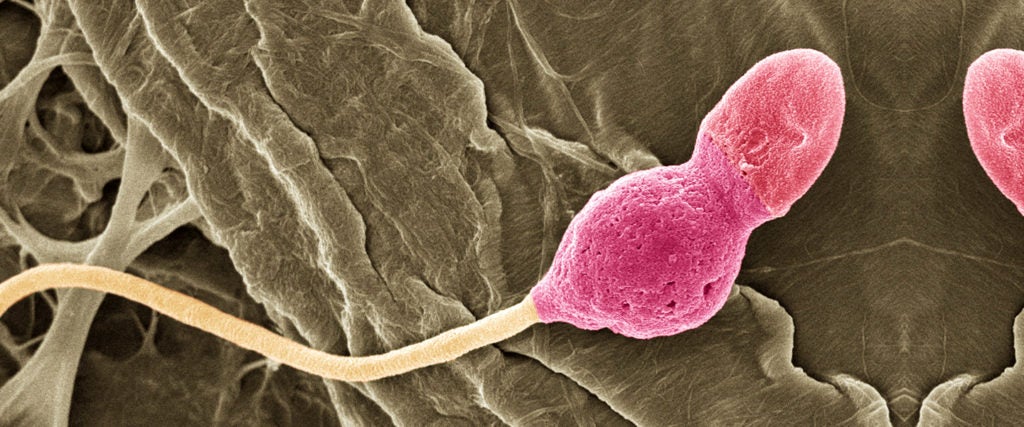You are here because one little sperm beat out the rest on its journey to the egg. In order to do so, that sperm had to be the best of the bunch, faster and more agile than its brethren. What scientists have recently learned, though, is that those sperm who qualify as the “best of the bunch” might not actually be like the bunch, at all. In fact, they might be mildly deformed.
Sperm utilize a long tail in order to move through the goop of the vagina to reach the egg. They’re like tadpoles, swimming through an algae-thick pond. But what researchers at the University of Birmingham found is that the fastest of the gang were the ones whose tails actually did the least.
It was previously thought that sperm with fully-formed, active tails would be most mobile, when in fact, it’s the sperm who retain the least movement and capabilities in their tails that managed to get to the egg first. Specifically, simulations showed that sperm with inactive segments of the ends of their tails had a 430 percent increase in efficiency and 70 percent increase in velocity compared to their fully-formed peers.
David Smith, a professor of applied mathematics at the University of Birmingham, told Phys.org, “Our model suggests that this tiny end piece region that was previously ignored shapes the whole swimming stroke into something more effective and efficient — just like in Formula 1, minute ‘design’ details can be the difference between winning and losing.”
What exactly does this mean for you? Can you train your sperm to be the Michael Phelps of the testes?
At the moment, no, but this could play a huge role in understanding and treating male infertility. More than just sperm count, the research suggests that the specific development of the sperm cells themselves may be a more significant factor in impregnation.
Earlier this month, researchers at the University of California, San Diego, successfully created human sperm stem cells. In the future, it’s possible that these lab-grown sperm cells will specifically be developed with inactive end-tails and used to help infertility. We’re still quite a ways away from that — we haven’t even figured out how to keep those lab-grown sperm alive — but it’s definitely an improvement in the field.
Maybe one day, we’ll be able to create little slightly-messed-up super swimmers who will all have to fight each other to death outside the egg. Then you’ll know that the victor really was the best of the bunch, not just some flawed anomaly.

